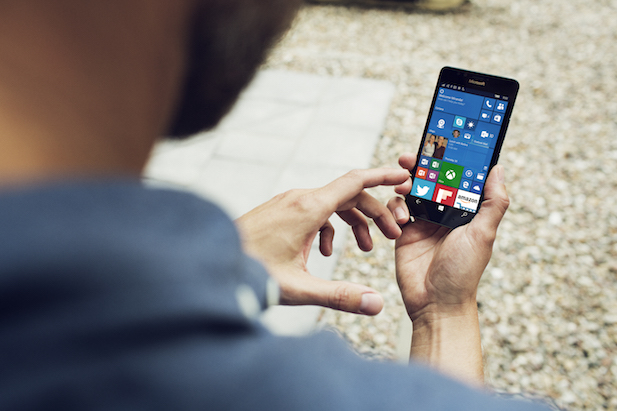Windows Phone made its latest attempt at a comeback this week, with the announcement of the first Lumia devices running Windows 10. To say Microsoft is playing catch-up with Apple and Google is a bit of an understatement, but the buzz around the event was welcoming, albeit cautious.
Amid the laptops, tablets and smartphones was a quirky display dock, which transforms how your smartphone works. The dock plugs into new Lumia devices via USB Type-C cable and allows a smartphone to be connected to a larger screen and keyboard.
While not as sexy as the Microsoft Band wearable or HoloLens augmented reality device, the dock shows where Microsoft is playing. By making Windows 10 universal, across your laptop, tablet and (potentially) smartphone, it is hoping to gain kudos through convergence.
Everything I do, I do it for high quality LTE network performance with low latencies
Swisscom has caught the eye of Mobile Europe in recent months. It has launched VoLTE, been speedy in bringing LTE-Advanced to the masses, tested new network tech in manholes, and revealed this week it was ditching 2G to power surging data demand ahead of its move to 5G.
To illustrate this, it has made the slightly leftfield move of hiring Canadian soft-rock God Bryan Adams to be the face of a slightly confusing photography campaign. The #shotby campaign involves Swisscom customers downloading the Best Net app and praying for a phone call from the Heaven songwriter. Adams will then use the video call to work out the best angle for a shot and then take a mock selfie of himself and the lucky Swisscom customer.
It beats a duet with Melanie C. As Adams himself, he says: “I’m pleased to be a part of this mini revolution. The technology gives photography a completely new perspective.” As for Mobile Europe, it makes us want to Run To Uster (that’s a Swiss city, for the uninitiated).
Take your pico
The inexorable crawl of the Internet of Things to cover absolutely everything you can think of has continued with PicoWAN, which has launched its own plug-based solution to those wanting to build low powered wide area networks.
Instead of using rooftop concentrators or antennae, these plugs connect to the internet via Wi-Fi or Ethernet. By eschewing the normal rooftop installation of hardware, PicoWAN is hoping to drastically slash the cost of setting up an IoT network.
It is planning to distribute as many as 200,000 of these pico-gateway plugs by the end of next year. It will run the business on a subscription-based model beginning at 50p per year per connected object.
Droning on about selfies
It’s somehow fashionable to bore on about the ubiquity of selfie sticks, but Mobile Europe thinks you must be completely joyless if you have a problem with them. It’s a stick – there are worse things out there. Drones are quickly becoming the next most moaned about tech accessory by doomsayers so Mobile Europe was delighted to a see a product that brings together the best of both devices.
The Verge reported on the Osmo this week, by drone manufacturer DJI. It is dubbed as the ultimate selfie stick and looks like a sheathed lightsaber. It connects to a smartphone and bespoke app and films content through a rotatable 12MP camera.
It can also film 4K video with the stick’s portable nature making it look like it will be targeted at extreme sports enthusiasts (or nutters). Expect to see them clogging up a tourist destination near you when it goes on sale from next week.
Turing tested
It’s probably quicker to list what modern electronic devices Alan Turing didn’t influence than what he did. The godfather of computing (and a lot more besides) has now inspired his first smartphone.
Turing Robotics has four devices for sale – Beowulf, Pharaoh, Cardinal and Dark Wyvern, the latter with its own slightly terrifying trailer.
Given Turing’s role in breaking the Enigma codes during the Second World War, it comes as no surprise that the Turing Phone has placed security at the heart of its features. When a call is made to another Turing Phone, end to end authentication creates a safe call that protects callers from cyber-threats and privacy intrusions.
It has also taken the leaf out of the Smartphone Marketing playbook, by coming up with a preposterous name for another feature. Step forward Liquidmorphium, a mix of zirconium, copper, aluminium, nickel and silver, which protects the phone from breakages.


